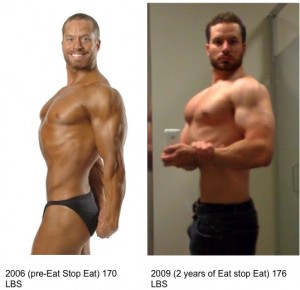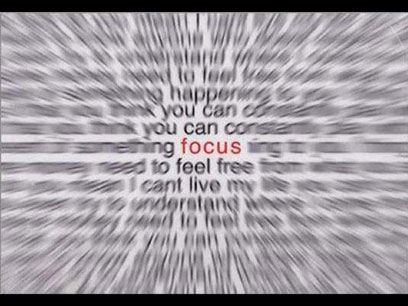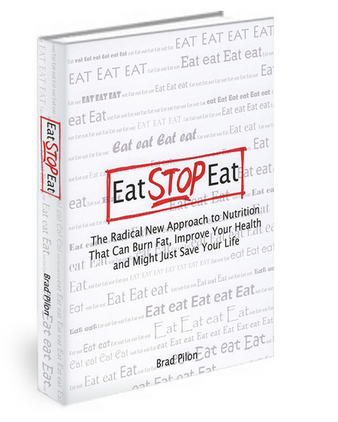The Rise of A Fasting, Fat Loss Expert
 Over the past couple of weeks I’ve shared with you some of the best body transformation secrets that fat loss experts, Erik Ledin and John Alvino, consistently use to help clients achieve incredible results day after day. Today, in part 1, and the last of this transformation series, we’ll interview none other than nutrition and fasting expert, Brad Pilon.
Over the past couple of weeks I’ve shared with you some of the best body transformation secrets that fat loss experts, Erik Ledin and John Alvino, consistently use to help clients achieve incredible results day after day. Today, in part 1, and the last of this transformation series, we’ll interview none other than nutrition and fasting expert, Brad Pilon.
*******************
Craig Ballantyne: This is Craig Ballantyne from TurbulenceTraining and TT Members and I’m here with Brad Pilon from Eat Stop Eat. Brad, welcome to the call and why don’t you give us a bit of a background just about what you’ve been doing in the field of health and fitness for the last little bit.
Brad Pilon: Absolutely. It’s pretty much been business as usual for me for the last two years now. It’s just been researching and writing on the health benefits of brief periods of fasting. It’s kind of become my little niche.
It started off as the topic of my graduate work at school and I just sort of carried it on from there. As of right now, I mean my background is nutrition so I consider myself pretty knowledgeable in the area of food but even more so in the area of no food.
Craig Ballantyne: Okay. And now obviously the reason I have you on this call is we’re talking about transformations. Whether it’s an actual fitness contest or just an everyday, average person wanting to lose some body fat.
So why don’t you talk to us about your specific transformation that you did, what you learned. All the exercise and nutrition information that went into your success story.
Brad Pilon: Yeah. Not a problem. It was probably about two years ago. Actually two years ago today. I had been in this industry for a while. Specifically in the bodybuilding area and I kind of suddenly realized that I’ve been in this industry for five, six years now and I’ve never actually done the full diet down and compete in a contest.
And I realized it’s kind of hypocritical for me to be advising people in this sort of area if I haven’t actually done it myself so I picked a goal and that was a local bodybuilding show and I said okay, I can do this. If I can help other people get ready for this, I can do it myself.
So it was the decision that all of a sudden it would be worth my while to at least experience it once. And it was a fantastic experience. It was really, really eye opening to the amount of work that’s involved but also the fact that it’s completely possible.
Craig Ballantyne: Great. And why don’t you just tell us a little bit more specifically what weight you went from, what you started out at and what you ended up at the end? How long it was and maybe just some of the specific nutrition tips that really helped you along the way.
Brad Pilon: Yeah. Not a problem. I had about four months to do this contest and I started out knowing that I was going to start it right in January so right about the beginning of December I kind of started cleaning things up a bit. So even through December I dropped four pounds. Went down from 192 to a starting weight of 188.
And then starting in January from 188, I was a very slow, constant loss all the way down to a day before the show my final weigh-in was 168 pounds at 5’10”. The day of the show I was 171.
I could tell you that that’s a result of some mastermind carb loading scheme but it was me attempting the typical bodybuilding carb load only to realize that I think a lot of that pre-contest nutrition stuff is a little bit of puffery and smoke and mirrors there so it didn’t turn out quite as well as expected so I’d like to say that my end weight was in fact 168.
And the day of the contest at 171 was kind of post diet for me.
Craig Ballantyne: So what were you expecting there? According to the bodybuilding legends, what should have happened?
Brad Pilon: At 168 I was lean. I was vascular and fairly thin-skinned. I thought for sure a carb load would pull the water away from your skin towards your muscles. Keep in mind I have a degree in nutrition but I should know better but the allure was just too big and I thought it would make me even more vascular and even more shredded if I did it properly.
At the end of the day it didn’t turn out – mind you, it didn’t make a massive difference either direction. Not like I ballooned up for the show or anything like that. But it just didn’t have the effect that I thought it would. So that was a lesson learned.
And actually I kept a journal of the entire process so looking through it now there were a lot of lessons learned. But that was probably the most eye opening for me was that in that area carb loading gets a lot more hype than it deserves.
Craig Ballantyne: Okay. We’re going to talk about the last seven days before a contest later on and we’ll talk about those details in a bit but what were just some of the basics that really worked and really helped you go from 188 to 168 and do the show?
Brad Pilon: The key for me and I think it’s the KEY for a lot of people is set a goal – and the goal for me was obviously to lose weight and to get as lean as possible.
The most important thing was not to develop training ADD.
So what typically happens is you get three or four weeks into a program and then all of a sudden you start wanting to switch because of something you’ve read in a magazine. And the worst thing you can possibly do while getting ready for a bodybuilding contest or a physique transformation is all of a sudden start training in a way to improve your bench press. Or all of a sudden you’ve been convinced that what you really want to do is improve your 40-yard dash and you start doing exercises specific to that.
So the key for me, the No. 1 lesson, was keep my eye on the prize. The goal for the next four months is to maintain muscle mass and lose fat. Not to improve my bench press or my squat or my 40-yard dash. None of that stuff.
I actually didn’t read any magazines for that four-month period because I did not want anything distracting me. So it was eye on the prize was the No. 1 thing I learned and the one thing I had to battle with the whole time because it’s not that you get bored of your workout routine. It’s just that other people start talking about what they’re doing and as a trainer you get interested and want to try it yourself so that was the No. 1 thing.
Craig Ballantyne: Okay. What about for nutrition as well? What type of nutrition approach did you take and what worked?
Brad Pilon: This was a while ago so this was pre fasting for me. And I was still in the several meals a day routine. I ate breakfast between 6:00 to 8:00 a.m. I had a snack around 9:00 or 11:00. I had lunch between 12:00 and 2:00. I had a second snack between 3:00 and 5:00. And I had a snack before bread which supposedly between 10:00 and 12:00 but it usually ended up around 1:00 or 2:00 just based on my schedule.
Craig Ballantyne: Sorry Brad. One second. You said – that last snack was before bed?
Brad Pilon: It was before bed.
Craig Ballantyne: Okay. Because you said between bread.
Brad Pilon: Yeah. Yeah. And funny thing is there was no bread involved so I’m just looking back at this and going man. Some bread would have been nice during this diet.
Craig Ballantyne: Right on.
Brad Pilon: Thank you for pointing that out.
Craig Ballantyne: No problem.
Brad Pilon: Now, I’m looking at the numbers and what I did was I aimed for a base of 1400 calories which sounds extremely low but that was the base. And what that allowed me to do was add on top of it if I needed to. So those were the predetermined meals and that didn’t include my two to three cups of coffee a day and that sort of thing so I imagine for the entire diet I was probably around 1800 or 2000 calories.
Craig Ballantyne: That’s it?
Brad Pilon: Yep. It was manageable though. I’m looking through my records now. I mean I was practicing Krav Maga and playing hockey and training for pretty much everything up until the last two weeks of the show. So obviously didn’t do too bad for the energy levels.
Craig Ballantyne: Okay. So what do you think you were eating before you went on that diet?
Brad Pilon: I ate responsibly. I don’t think I was out of control by any means. But I wasn’t – I certainly wasn’t recording anything and I definitely wasn’t weighing anything.
So before the contest the meals didn’t really change too much. I thought that the best plan would be stick with what I like so breakfast was predominantly oatmeal. My lunch was meat and veggies. It was all the foods I liked.
I just slowly started cutting back on the portion sizes. And cutting small things out.
I moved my coffees from two cream, two sugar down to one cream, one sugar and finally just one cream and a sweetener. Little changes like that but it wasn’t anything – no drastic change from pre-contest to contest for me.
Craig Ballantyne: Did you stay with the 1800 to 2000 calories from start to finish of the entire transformation?
Brad Pilon: Yeah. I’m looking through my journal right now. I think the last week of the contest – again, I think I bought into some of the lure and I think I dropped down slightly but I bet you it wasn’t lower than 1500 for the day.
But yeah, it seems to just from my records that’s pretty much where I stayed.
Craig Ballantyne: Now let’s back up a bit and why don’t you tell us where you started, how you got into the fitness and nutrition scene and where you ended up – where you are now. For people that don’t know you, your expertise now is in the area of fasting for weight loss and people should know because one of the bonuses for this Turbulence Training promotion in addition to this call they’re getting your Eat Stop Eat book which is your dieting by 24-hour fasts program.
So why don’t you start from way back when you were working in the health food store to where you are now.
Brad Pilon: You know it. All right. So fitness and nutrition has been in my blood. It always has been. I was the young 12-year old reading Flex magazine. Muscle and Fitness magazine. At 16 I started working in my local health food shop and I was peddling the wares as they say.
I went from there to studying nutrition in university. Literally right out of university, the next day after my final exams I moved into the sport supplement industry in the area of research and development. I was there for about seven years when I decided that going back to school would be in my best interest. It was something I had always wanted to do.
So when I went back to do graduate work in nutrition, I was hit with a bit of a dilemma because I had a non-compete clause which means that I really wasn’t supposed to go into the area of sports nutrition. I had just done seven years in nutrition and sports nutrition so I didn’t really want to reinvent the wheel and sort of keep doing the exact same thing over and over again.
So that’s when the idea came to get a graduate level degree in nutrition by studying the effects of no nutrition. And it kind of just went from there. And so as I started off studying to truly understand dieting and fitness in people, so you gotta start with what happens with no food at all.
And my plan was to study that and then build up from there. I figured I’d learn the negative effects of having absolutely no food and what happens when you add certain things in and kind of get my whole plan structure based on and using fasting as a starting ground.
But what I found was the benefits of brief periods of fasting were actually very intriguing and a very effective method to reduce your calorie intake. And so I just stuck with it and rolled with it.
I studied the effects of fasting on a metabolism of fat, carbs, protein in the body. Looked at its potential health implications. Looked at its value in weight loss and that sort of became my whole area of study.
Let’s head to part 2 and read what Brad thinks about cheat meals…